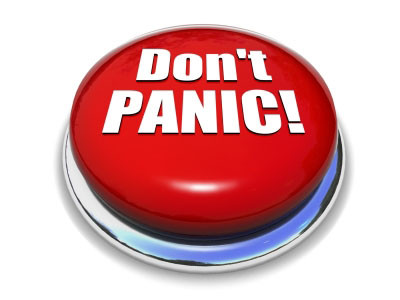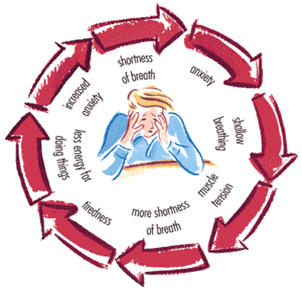
For people who have never experienced anxiety and panic attacks, the solution seems simple: just don’t worry about it. Really, they just don’t get it at all. Living with a constant fear of another panic attack, the fear of social situation, the gasping for breath and fear of dying, chest pains and myriad other signs of anxiety and panic that grip sufferers is hard to explain to somebody who has not been there.
We previously ran an article about the supplements and herbs that are beneficial to anxiety, so this short article focuses instead on the alleviation of panic and anxiety symptoms using different methods we have come across throughout our time. Anxiety medications can do two things: cause awful side effects, often resulting in increased anxiety itself, and potentially cause liver and kidney damage.
Contents
Candle-light Technique
This technique is really useful right at the start of the symptom chain.

Close your eyes and imagine you’re in a dark room with a candle in front of you. Use visualization to really see and feel the dark room with the candle burning. By just focusing on the candle, you will be able to breathe and regulate yourself back to calm.
The ‘blinker’ technique
This is one of the most popular ways to help cam the onset of a panic attack just when you start to have the physical sensation of your stomach pushing-down; the feeling you get when you’re about to jump from a great height.
Whenever you blink, clear all invasive thoughts from your mind. As negative thought patterns start to intrude, blink them back, and try to empty them. It may help you to actually envisage a blank page at this point. As you develop self-confidence, self-discipline and the need to tolerate these initial feelings, you actually gain control of them.
Panic attacks are often guided by circular thoughts repeating themselves over and again. Recognizing the symptoms of an attack, can actually help to induce one. Whereas this technique allows you instead to feel the symptoms coming and then blink. They return: blink. Blank page. As you begin to associate blinking with clearing the mind, you will begin to take control of the spiral of thoughts.
Remember – every single blink clears your mind; killing intrusive thoughts. Keep ‘blinking’ till you feel better.
Implement your own CBT
We’ve mentioned before the benefits of having therapy to help you overcome panic symptoms. However, there are CBT techniques that you can practice at home, which are highly effective, and actually very similar to the blinking technique, in terms of empowering you to feel you can get a grip on the anxiety.
Emotions are like waves: they come and go, and eventually they do pass. Every single emotion you have is actually only temporary. Many of us forget this when we succumb to a panic attack. Simply trying to hold this though in your mind when a panic attack starts to rear its ugly head will help reduce the intensity of the panic attack; eventually quashing it.
Sleep
OK, so this sounds like quite an obvious one, but if you can find strategies to help you get better sleep, you will find your resilience to succumbing to panic attacks will diminish. If you can feel an attack coming on, and have the time within your schedule, allow yourself to sleep. It will calm you down, and afterwards you may find yourself in a different frame of mind. To help you get sufficient sleep, look at some of the methods shown below.
Relax
Through experimenting with techniques such as Massage, Yoga, Reiki and Meditation, you can teach your body to relax. Any of these therapies elevate production of happy relaxed hormones, such as serotonin. In addition secondary benefits will help your body deal with stressful events more effectively; preventing panic attacks.
Exercise
Reducing stress hormones and elevating “feel good” hormones, getting decent exercise helps regulate breathing and opens up the passages of the body to allow air in. Ultimately, you feel naturally tired after exercise too, so it can help induce sleep.
Alternatively, you can try the Panic Away Program.
